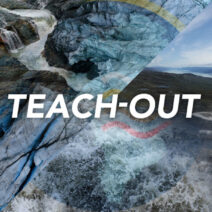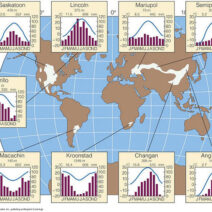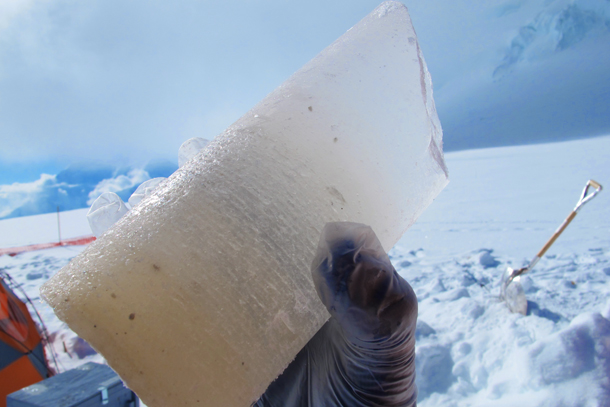Ice core samples serve as precious time capsules, meticulously encapsulating snapshots of Earth’s atmospheric conditions over millennia. By drilling deep into glaciers and ice sheets, scientists retrieve cylindrical cores of ice that reveal an intricate story—the narrative of our planet’s climate history. These samples, akin to the rings of a tree that divulge age and environmental conditions, hold vital clues to understanding global warming and climate change.
Much like a well-written historical chronicle, every layer of ice that comprises an ice core encodes information about the atmospheric composition at the time each layer was deposited. As polar snow accumulates, it becomes compressed into ice, trapping gas bubbles within its structure. These gas bubbles are invaluable; they contain ancient air samples, allowing scientists to analyze the concentration of greenhouse gases like carbon dioxide and methane across various epochs. These concentrations act as the foundation for understanding how natural fluctuations and human activities have impacted our climate.
The temporal scale provided by ice cores is staggering. The longest ice cores, extracted from places like Antarctica and Greenland, can extend back 800,000 years, enabling scientists to peer into climatic conditions during periods far removed from contemporary experience. Within these layers, distinct periods of glaciation and interglacial warm phases emerge, illustrating a cyclical dance between warmth and cold—a cyclical dance that has been influenced by factors such as solar radiation, volcanic activity, and Earth’s orbital variations.
One of the most compelling aspects of ice cores is their ability to correlate temperature with greenhouse gas concentrations. As scientists examine isotopes of oxygen (δ18O) within the ice, they glean information about past temperatures. A mathematical relationship emerges between temperature fluctuations and gas levels; when carbon dioxide concentrations rise, so too does global temperature. This powerful linkage serves as a clarion call regarding the current trajectory of human-induced climate change.
Furthermore, ice core analyses provide crucial insights into abrupt climate shifts, often termed “tipping points.” These are instances where a relatively small change in environmental conditions can lead to dramatic and irreversible changes in the climate system. For example, data gleaned from ice cores indicate that major transitions—such as the end of the last Ice Age—occurred over very short geological timescales, within just a few decades or centuries. Understanding these tipping points is essential for predicting future changes and preparing for their consequences.
Consider the metaphor of a librarian meticulously curating a collection of ancient scrolls. Each ideological and chronological thread woven into the narrative of each scroll reveals the evolution of human understanding and belief systems. Similarly, ice cores are the librarians of Earth’s climate history; they curate a collection of atmospheric compositions that elucidate the trajectory of our planet’s climate system. The dialogue fostered through these cores equips scientists with the knowledge necessary to comprehend the potential consequences of our current behaviors.
The implications of ice core studies are profound. As the planet warms, climate scientists witness an alarming acceleration of ice melt in polar and glacial regions—a phenomenon with far-reaching repercussions. The retreat of glaciers can lead to rising sea levels, impacting coastal populations and ecosystems globally. Additionally, the release of methane from thawing permafrost poses another threat, as this potent greenhouse gas can amplify warming significantly. Ice cores elucidate the historical patterns of these phenomena, allowing for predictive models that are crucial for policymakers and conservationists alike.
Furthermore, the preservation of artefacts—tiny air bubbles, dust, and even volcanic ash—further informs scientists about the Earth’s climatic narrative. Volcanic eruptions release dust and gases that can alter the climate temporarily, and this is reflected in the ice layers as well. By correlating these volcanic events with temperature variations, scientists gain insight into the resilience of Earth’s climate under stress, which is particularly relevant as industrial activities continue to emit pollutants and greenhouse gases at unprecedented rates.
The scientific community derives a sense of urgency from ice core research. The findings articulate an imperative: humanity must adopt more sustainable practices to mitigate the impending threats posed by climate change. Ice cores serve not only as a record of what has come before but also as a roadmap guiding actions aimed at averting catastrophic outcomes.
Visually, the ice cores themselves are stunning, appearing as stripped cylinders, revealing layers of blue and white. Each layer is a testament to what has changed—each ring representing a year, a decade, an era—offering a breathtaking glimpse into the Earth’s climate evolution. As these pristine samples are extracted, processed, and analyzed, they serve as a poignant reminder of the fragility of our environment and the importance of stewardship.
In conclusion, ice core samples are emblematic of both our planet’s storied past and the urgent challenges of our future. By meticulously decoding these frosted archives, scientists unlock immense knowledge about Earth’s climate system. Understanding how ice core analyses inform our grasp of global warming reveals not merely a historical account but also a clarion call for action. The ongoing narrative surrounding climate change necessitates that society reflects on these lessons, prompting proactive measures to foster a sustainable future. Through the lenses of ice cores, we glimpse not only the ambiance of epochs long gone but chart a path forward in our relentless pursuit to preserve the stability of our planet’s climate for generations to come.








